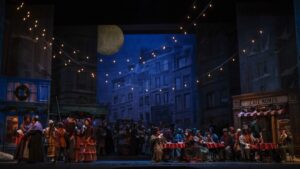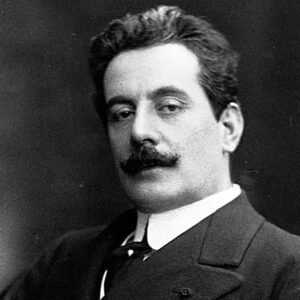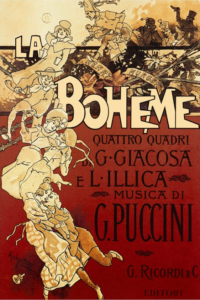
La bohème tells a narrative of friendship, love, and youth, via the tumultuous relationships between Mimì and Rodolfo, and Marcello and Musetta. Be taught extra concerning the historical past and music of this fan-favorite opera in this system notes under.
Be taught extra about La bohème, on stage on the Ellie Caulkins Opera Home February 22-March 2.>>
Relatable Tales About Relatable Characters
Verismo: the concept that operas ought to inform plausible tales. No extra Germanic gods or Italian aristocrats. Verismo characters and their experiences ought to really feel acquainted. One won’t have confronted these challenges personally, however one can determine with them. One would possibly know individuals who have been in a scenario like that or maybe noticed such an individual “throughout a crowded room,” as Rodgers and Hammerstein would have it. Such actions and occasions resonate deeply with an viewers, particularly when given impressed music by a grasp composer. La bohème is precisely one such work.

Its composer, Giacomo Puccini (1857–1924), didn’t invent the concept of verismo, however he definitely proved that it might triumph. Particular inspiration for La bohème got here from the novella Scènes de la vie de bohème (Scenes of Bohemian Life) (1849) by French author Henri Murger. On this case, “Bohemian Life” doesn’t discuss with Dvořák’s homeland. Fairly, “bohemian” additionally describes a way of life of creative or mental pursuits with priorities totally different from these of mainstream society. Elsewhere on this program, Kristine McIntyre, director of Opera Colorado’s 2025 manufacturing, provides her personal views on the intense and darkish sides of that life and what they could say about seizing the second. Allow us to right here think about how the ever-adored La bohème got here to the operatic stage.
Phrases and Music Conflict
One can not merely take a novella and sing each phrase of it. What works on the web page could not work on the stage, not to mention serve the voice. Librettists Luigi Illica and Giuseppe Giacosa set about changing Murger’s story right into a singable, stageable story however quickly discovered the composer to be a demanding and detail-oriented collaborator. Some strains Puccini rejected as “superfluous chattering.” At different occasions, he insisted on having a couple of extra phrases—even only a few extra syllables—inserted into the textual content for the needs of transition, particularly in order that an essential phrase—corresponding to speranza (“hope”) in Rodolfo’s first aria—would fall the place he needed the climax of the melody. The composer’s persevering with calls for for revisions infuriated his librettists, who wrote to Puccini’s writer, Giulio Ricordi, concerning the difficulty. Diplomacy preserved the partnership, partially as a result of Ricordi refused to let Giacosa resign.
A Blended Response on the Premiere

La bohème first reached the general public at Turin’s Teatro Regio on February 1, 1896. Critics responded skeptically to the work. Maybe they had been anticipating a darkish tragedy, which La bohème isn’t. Admittedly, it has a tearful conclusion, however there’s loads of sweetness alongside the best way, which appears to have irritated some critics on the premiere. Nonetheless, audiences had a distinct opinion, applauding and cheering enthusiastically. Puccini described the general public response at Turin as “a splendid reception.” Historical past has confirmed that audiences had been right about La bohème’s user-friendly excellence.
Love is Difficult
Though the music of La bohème is undeniably stunning, the characters additionally assist it to fly. Here’s a world inhabited not by clichés however by plausible human beings—completely verismo! Which of us can not imagine in these vibrant younger individuals, laughing within the face of poverty as their passions draw them collectively and drive them aside? Mimì and Rodolfo embody the idealistic facet of affection: a rose-tinted romance that may conquer all however demise. Against this, Musetta and Marcello personify a sharper-edged need—extra mature, maybe, in its admission that love isn’t all hearts and flowers. Puccini’s process was to craft music that distinguished between these various views of romance: yet another rapturous, the opposite extra stressed.
Though we could not stay the lives of those 4 lovers—and in some methods, it could be greatest not to take action—we nonetheless encounter them infrequently. For over a century, audiences have embraced this exceptional opera as a result of its characters breathe with the spark of life. Whether or not it’s a primary expertise with opera or an oft-repeated encounter with Mimì and Rodolfo, La bohème reaches into the listener’s soul!
Program notes © Betsy Schwarm, writer of the Classical Music Insights collection.